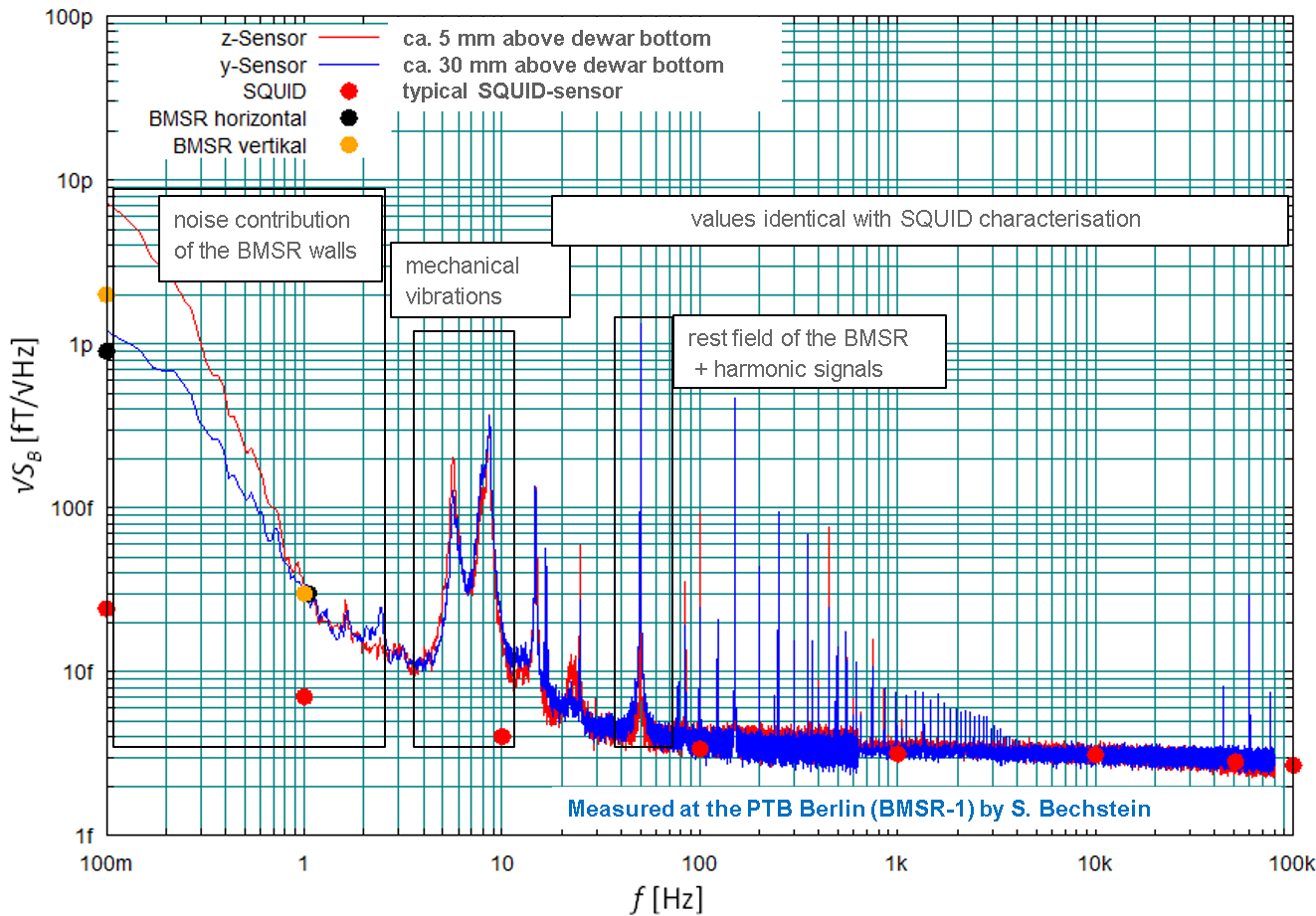You are here: Home / Research and Development
Low noise and non metallic liquid-helium cryostat

Low-noise Magnetic Field Cryostat for SQUID-Applications
Technical Data for the Cryostats
| parameter | value |
|---|---|
| volume of liquid helium | 5 to 12 litre (other volume possible) |
| time to complete evaporation of helium | 3 to 7 days (depends on size) |
| heat load | 0.1 W (in standby operation) |
| rate of helium evaporation | ≤ 3 litre / day |
| holding time of the liquid helium | up to 4 days without refilling |
| initial noise of the cryostat | < 3 fT / Hz½ |
| helium leak test (He-vessel) | < 1 × 10-11 mbar l / s |
ILK Dresden developed low noise magnetic field and non metallic helium cryostats made of GRP (glass reinforced plastics) with a high helium and vacuum holding time.
The cryostats can operate in a direction independent operation mode (tiltable arrangement) and hence they are suitable for a plurality of several applications.
The ILK concept offers much lower permeation rates inside the He-reservoir as comparable models from other manufacturers and is therefore perfect for SQUID (superconducting quantum interference device) applications and other long-term measurements.
The technical design of the cryostats is thus predestined for future sensor generation.
Specification
- suitable for the cooling of SQUID-Sensors
- non-metallic (GRP)
- fast filling with LHe via thermosiphon
- GRP exhaust gas cooled radiation shield for high efficiency.
- small cold-warm distance feasible
- low maintenance
- other design variants possible on costumer request
Low noise magnetic field
The low-noise magnetic field of the cryostat was tested in the magnetically shielded room BMSR-1 of PTB Berlin and is smaller than the lowest resolution limit of the measurement system used, see figure below.
Your Request
Further Projects - Research and Development
Hydrogen and methane testing field at the ILK
Simultaneously pressures up to 1,000 bar, temperatures down to –253°C
Cryostats, Non-Metallic and Metallic
position indenpendent, highest endurance, tiltable for liquid helium and liquid nitrogen
Cryogenic liquid piston pumps for cold liquefied gases like LIN, LOX, LHe, LH2, LNG, LAr
Feeding pumps for cryogenic liquid gases























